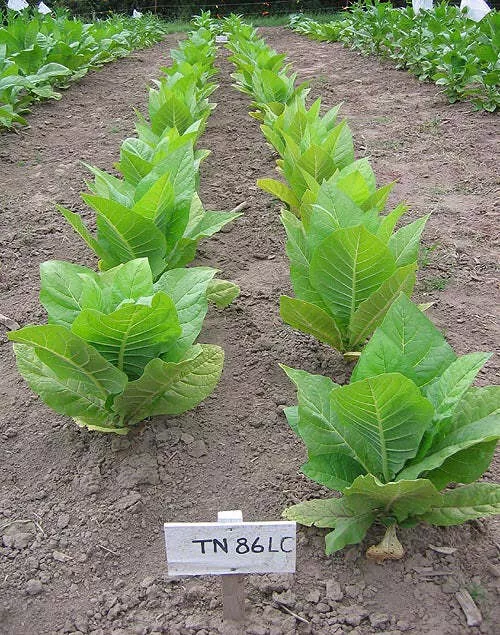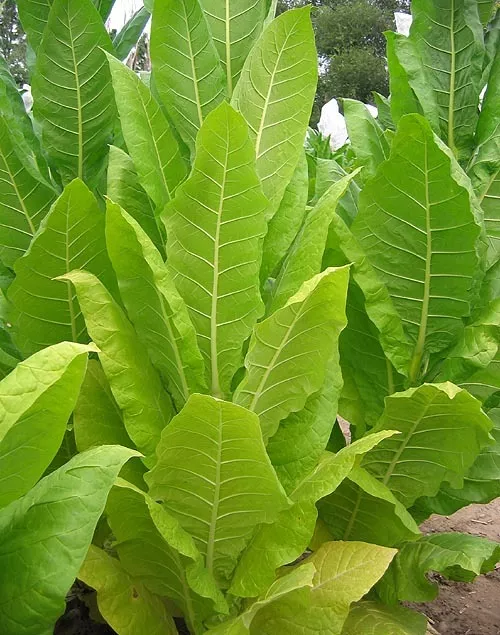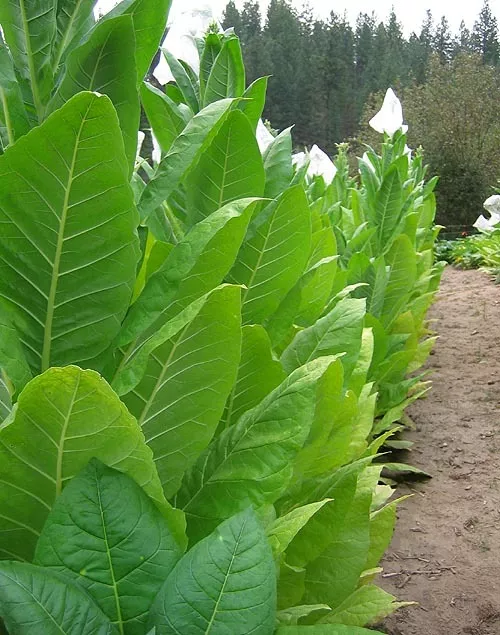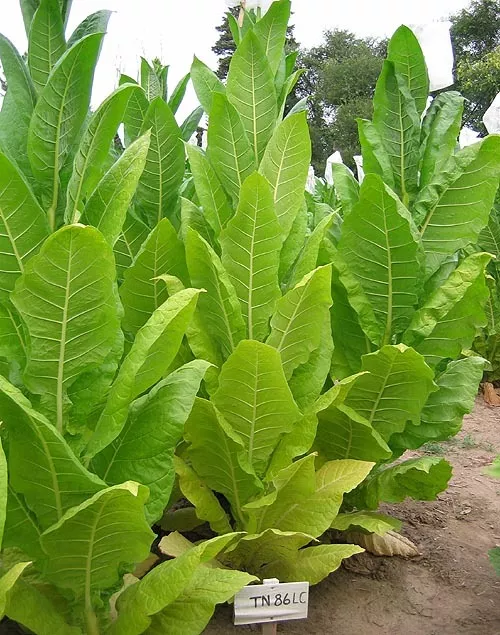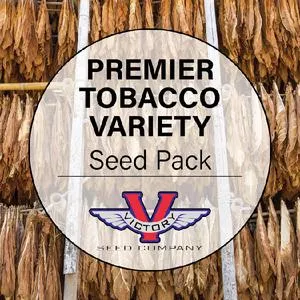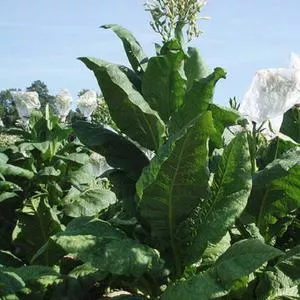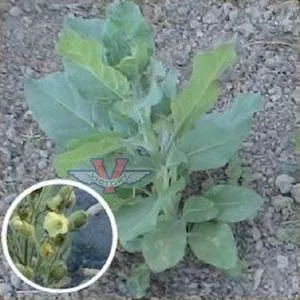




TN86 LC Burley Tobacco
Price: $4.25
SKU: 10006421It is a late maturing variety with an extreme upright growth habit which results in less breakage and marketable leaf loss during harvest. 'TN 86' has a high yield potential and should be topped at about twenty-two to twenty-six leaves. Topping the plants higher than this will result in unnecessarily large plants that are difficult to manage and harvest.
'TN 86' matures to a lighter green color in the field when compared to other Burley tobaccos and air cures to a reddish-tan.
Like many tobacco varieties, 'TN86' is an amazing plant that grows from a seed as tiny as a pinhole, to well over six feet in height in a single growing season. The plants are attractive and make a very interesting addition to flower gardens. Since their flower heads will reach six feet or taller, they are typically planted in the back of the bed as opposed to along the border. Tobacco prefers healthy, rich soil in full sun. It blooms in mid to late summer and is attractive to pollinating insects. It is an annual (tender perennial in warmer climates).
'TN 86', was the first Burley tobacco variety developed with resistance to TVMV (Tobacco Vein Mottling Virus), TEV (Tobacco Etch Virus), and PVY (Potato Virus Y). It is also resistant to Black Shank (Race 0 and Race 1), Black Root Rot and Wildfire bacteria.Developed by Dr. Robert Miller at the Tobacco Experiment Station in Greeneville, Tennessee using material originally crossed by Dr. Creighton Gupton, former USDA Agricultural Research Station Burley tobacco breeder at the Tobacco Experiment Station in Greeneville. It was released by the Tennessee Agricultural Experiment Station in February of 1986.
Typical Use: cigarette
Curing Method: air
Tobacco Type: Certified Low Converter
Tobacco Type: Burley
Number of Leaves: 22-26
Suckering Tendency: Low
Origin: Tennessee
Lifespan: Annual
Sun Requirements: Full Sun
Best sowing Method: Start Indoors
Disease Resistances: Black Shank
Disease Resistances: TMV
Disease Resistances: TSWV
Disease Resistances: Black Root Rot
Disease Resistances: Wildfire Disease
Disease Resistances: CMV
Genetic Classification: Open Pollinated
Once tiny seedlings emerge, you can pick them out one by one and move them into individual cells. Very lightly fertilize and never allow the potting soil to dry out. Within 6 weeks it'll be ready to plant in the garden. Wait until all risk of frost is over before planting outdoors.
For additional information, please have a look at our more detailed guide with photos.
What are Low Converters (LC)? Tobacco plants produce many different alkaloids. Two of the most commonly produced alkaloids are nicotine and nornicotine, which are closely chemically related. During the curing and drying process, some nicotine chemically converts to nornicotine. The heat of combustion can then convert some of the nornicotine into TSNA's, or Tobacco-specific nitrosamines. Tobacco-specific nitrosamines comprise one of the most important groups of carcinogens in tobacco products, particularly cigarettes and American style fermented dipping snuff.
Over the past several decades, selective breeding has reduced the nornicotine content in most modern day varieties to near zero in burley and dark tobacco types. With the goal of further reducing TNSA's, research is now focused on lowering the amount of nicotine which converts to nornicotine during the curing process. To qualify as an LC tobacco, the conversion rate must be 3% or lower.
The conversion rate of nicotine to nornicotine is controlled by particular genes in the plant but is not consistent from plant to plant, and declines in successive generations. To be classified as an F1 generation LC tobacco, a leaf sample must be taken from each plant during each growing season and its conversion rate must be measured. Only seeds from plants with less than a 3% conversation rate can qualify as certified F1 generation LC seed. Non-certified seed is often sold as F2 or F3 generations. Be watchful for that as you shop for seed. All of our LC strains are certified F1 generation LC.

